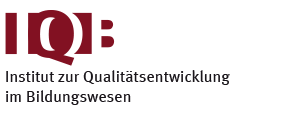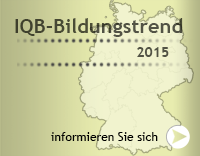Ländervergleich 2008/2009 in der Sekundarstufe I
Wer hat an der Studie teilgenommen und wann fand sie statt?
Der Ländervergleich Sprachen in der Sekundarstufe I basierte auf zwei zeitlich und organisatorisch getrennten Erhebungen, deren Ergebnisse in einem gemeinsamen Berichtsband im Jahr 2010 veröffentlicht wurden. Die Erhebung für die Fächer Deutsch und Englisch als erster Fremdsprache wurde zwischen Mai und Juli 2009 durchgeführt. Daran nahmen im gesamten Bundesgebiet fast 40.000 Schülerinnen und Schüler der 9. Jahrgangsstufe aus 1.500 allgemeinbildenden Schulen aller Schularten des Regelschulsystems teil (Hauptschulen, Realschulen, Gymnasien und Schularten mit mehreren Bildungsgängen einschließlich Gesamtschulen). In jeder nach einem Zufallsverfahren ausgewählten Schule wurden ein bis zwei Klassen für die Teilnahme an der Testung ausgelost.
Im Fach Französisch als erste Fremdsprache erfolgte die Erhebung für den Ländervergleich bereits 2008 in Ankopplung an eine Studie, die zur Normierung der Bildungsstandards für das Fach Französisch durchgeführt wurde. Die realisierte Stichprobe im Fach Französisch umfasste knapp 6.000 Schülerinnen und Schüler aus Schulen mit mehreren Bildungsgängen, Realschulen, Gymnasien und Integrierten Gesamtschulen der Länder Baden-Württemberg, Berlin, Hessen, Nordrhein-Westfalen, Rheinland-Pfalz und dem Saarland.
Welche Kompetenzbereiche wurden getestet?
Im Fach Deutsch wurden Kompetenzen in den Bereichen „Lesen – mit Texten und Medien umgehen“, „Zuhören“ sowie „Orthografie“ getestet. Ein Teil der Schülerinnen und Schüler bearbeitete Aufgaben zu allen drei Kompetenzbereichen, ein anderer Teil nur Aufgaben aus zwei der drei Bereiche. In den Fächern Englisch und Französisch als erste Fremdsprache bearbeiteten alle Schülerinnen und Schüler Aufgaben aus den Bereichen „Leseverstehen“ und „Hörverstehen“.
Was wurde außer den Kompetenzen der Schülerinnen und Schüler noch erhoben?
Die Kompetenztests wurden durch einen Schülerfragebogen ergänzt, mit dem Angaben zur Person des Kindes und zum Unterricht erhoben wurden. Weiterhin nahmen die Lehrkräfte der beteiligten Schülerinnen und Schüler an einer Fragebogenerhebung teil. Die erhobenen Informationen dienten dazu, die Lehr- und Lernbedingungen in deutschen Schulen im Überblick zu beschreiben und zu untersuchen, inwieweit unter bestimmten Bedingungen eine optimale Förderung aller Schülerinnen und Schüler erreicht wird.
Wer verantwortet die Studie und wer führte sie durch?
Auftraggeber der Studie waren die Kultusministerinnen und Kultusminister der Länder. Die wissenschaftliche und datenschutzrechtliche Gesamtverantwortung für den Ländervergleich lag beim Institut zur Qualitätsentwicklung im Bildungswesen (IQB) an der Humboldt-Universität zu Berlin. Hier wurden die in der Studie eingesetzten Testinstrumente und Fragebögen entwickelt, erprobt und optimiert. Mit der Organisation und Durchführung der Studie beauftragte das IQB das IEA Data Processing and Research Center (DPC) in Hamburg. Die Testung selbst wurde von externen Testleiterinnen und Testleitern durchgeführt, die vom DPC für diese Aufgabe geschult wurden.
Wer hat die Studie ausgewertet?
Die elektronische Erfassung und Kodierung der Antworten der Schülerinnen und Schüler sowie die ersten Schritte der Datenaufbereitung erfolgten durch das DPC nach Vorgaben des IQB. Die Skalierung der Kompetenzwerte und die Auswertung der Daten erfolgte am IQB. Die Ergebnisse der Datenauswertung wurden in einem Bericht zusammengefasst, der im Sommer 2010 der Öffentlichkeit vorgestellt wurde (Köller, Knigge & Tesch, 2010). Inzwischen sind auch mehrere vertiefende Analysen der Daten durchgeführt und publiziert worden.
Welche Aufgaben wurden in den Tests verwendet?
Die Testaufgaben basieren auf den Beschreibungen der länderübergreifenden Bildungsstandards der Kultusministerkonferenz und zielen darauf ab zu erfassen, inwieweit diese Zielvorgaben in den einzelnen Ländern der Bundesrepublik erreicht werden konnten. Im Vergleich zu Aufgaben, die im Unterricht eingesetzt werden, sind die Testaufgaben in Schulleistungsstudien oft kürzer und schneller zu beantworten. Im Ländervergleich 2009 wurden sowohl sogenannte Multiple-Choice-Aufgaben eingesetzt, bei denen aus verschiedenen Antwortmöglichkeiten die zutreffende auszuwählen war, als auch Aufgaben, die nur eine kurze Antwort in einigen Wörtern bis wenigen Sätzen erforderten.
Wer hat die Aufgaben entwickelt und wie wurde sichergestellt, dass die Aufgaben von Schülerinnen und Schülern der 9. Jahrgangsstufe gelöst werden können?
Die Aufgaben wurden von einem Team erfahrener Lehrkräfte aus allen Ländern der Bundesrepublik Deutschland entwickelt. Die Lehrkräfte wurden für den Aufgabenentwicklungsprozess geschult und arbeiteten eng mit dem IQB und den wissenschaftlichen Kooperationspartnern des IQB aus den Fachdidaktiken zusammen. In Pilotierungs- und Normierungsstudien wurden die Aufgaben im Vorfeld mit zahlreichen Schülerinnen und Schülern in Deutschland erprobt. Im Ländervergleich wurden nur solche Testaufgaben eingesetzt, die aus fachdidaktischer Sicht als geeignet bewertet worden waren und die sich in den verschiedenen Vorstudien bewährt hatten.
Wie war der Testablauf?
Die Erhebung zum Ländervergleich in den Sprachen fand an einem Tag in der Schule statt und nahm einschließlich Einweisungen und Pausen knapp vier Zeitstunden in Anspruch. Die Testaufgaben waren in zwei Abschnitten von jeweils 60 Minuten zu bearbeiten, zwischen denen eine längere Pause eingelegt wurde. In der Erhebung zu den Fächern Deutsch und Englisch bearbeitete die Mehrzahl der Schülerinnen und Schüler in einem der beiden Abschnitte Aufgaben zum Fach Deutsch und im anderen Abschnitt Aufgaben zum Fach Englisch, wobei die Reihenfolge der Fächer variierte. Ein kleinerer Teil der Schülerinnen und Schüler bearbeitete in beiden Abschnitten Deutschaufgaben. Im Anschluss an die Testaufgaben wurde – nach einer weiteren Pause – der Schülerfragebogen vorgelegt, dessen Bearbeitung je nach Arbeitstempo des Schülers bzw. der Schülerin maximal weitere 60 Minuten in Anspruch nahm. Die Erhebung zum Fach Französisch folgte dem gleichen Ablauf, wobei hier in beiden Abschnitten ausschließlich Kompetenzen im Französischen getestet wurden.
Literaturhinweise
Die Kompetenzstufenmodelle zu den Bildungsstandards für den Mittleren Schulabschluss in den Fächern Deutsch, Englisch als erster Fremdsprache sowie Französisch als erster Fremdsprache sind auf der Homepage des IQB veröffentlicht.
- Köller, O., Knigge, M. & Tesch, B. (2010). Sprachliche Kompetenzen im Ländervergleich. Münster: Waxmann.
- Rupp, A. A., Vock, M., Harsch, C. & Köller, O. (2008). Developing standards-based assessment tasks for English as a first foreign language – Context, processes, and outcomes in Germany. Münster: Waxmann.
- Harsch, C., Pant, H. A. & Köller, O. (2010). Calibrating standards-based assessment tasks for English as a first foreign language. Standard-setting procedures in Germany. Münster: Waxmann.
- Porsch, R., Tesch, B. & Köller, O. (2010). Standardbasierte Testentwicklung und Leistungsmessung: Französisch in der Sekundarstufe I. Münster: Waxmann.
Eine Zusammenfassung des Ländervergleichs zum Download finden Sie hier.


